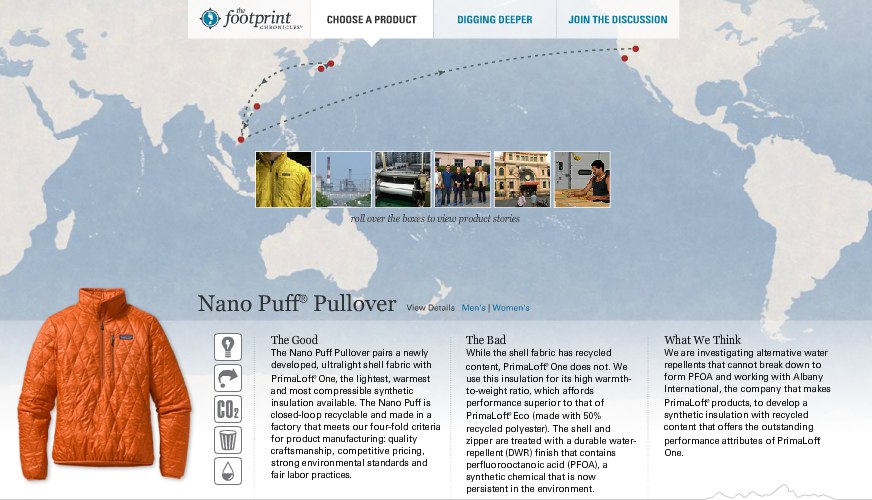Food producers may have it the worst. Consumers are constantly expecting higher standards from the food brands they already trust, and anticipating new brands to prove themselves. Whether they are looking for organic options, products labeled “GMO-free,” or meat was grown without hormones, consumers want to be told up front about what they’re buying. With all of the self-proclaimed “foodies” and “food critics” out there, the word “transparency” takes an entirely new meaning.
But brand transparency isn’t just for the foodies. Recent Mintel studies, among other sources, have proven that the number of consumers who want their favorite brands to transparent in their business practices has been increasing, regardless of the products they’re purchasing.
A great example of this comes from Patagonia, who takes extra effort to demonstrate as much transparency as possible. With the “Footprint Chronicles,” they meticulously document the steps involved in creating each of their products. They describe everything from the exact sources used for raw materials to the flaws that exist with the finished product. By openly sharing their weaknesses with customers, they provide a great opportunity for honest discussion about their products and raw material sources. This may even avoid angry rants from unhappy customers in the future.

Sharing flaws can actually help build trust. This form of transparency may show your brand’s softer side, proving that even great brands make mistakes. Follow up by demonstrating what you did to correct those situations, and the extra effort you took to repair any damages.

Zappos has also taken strides to prove their brand’s transparency. As an online shoe and clothing retailer, they recognize that shoppers cannot see what’s happening on the other side of the computer screen. For that reason, the brand places an emphasis on promoting their fun, dynamic workplace culture. They also work tirelessly to maintain customer service on social platforms and maintain their positive brand image.
The ways you promote transparency can differ depending on the services and products that you offer. But where do you begin?
Start by making sure there are no unanswered questions about your business by creating a checklist of any potential areas of concern. For example:
- Outsourcing? Your customers want to know.
- Partnerships? Your customers want to know.
- Charitable connections? You bet they want to know. (And you’d be smart to share.)
So hold back nothing that would help your customers feel informed about their purchase. Be honest, straightforward and true to your brand image. Follow through with your claims, and admit your flaws. To do this, it might help to put yourself in the customer’s shoes. Would you rather hear about an issue with one of your favorite brand’s products from a well-written product page, or from a handful of angry tweets? Would you trust the brand more if they told you up front, or if you watched them try to cover their tracks when it’s already too late?
Transparency has proven to be a huge benefit for numerous brands in a variety of industries. By applying transparent practices to your brand, you may be able to advance your brand and build deeper relationships with customers. What are some of your favorite brands that are transparent and open with their business practices? What are they and how are they excelling? Share with us some ways you’ve tackled this issue in the comment section below, and let us know what’s worked and what hasn’t.
This article was syndicated from Business 2 Community: Brand Transparency: Not Just for the Foodies
More Sales & Marketing articles from Business 2 Community:
- 10 Useful Sites All Marketers Should Save to Their Favorites Bars
- 25 Key B2B Content Marketing Stats [Infographic]
- 6 Customer Experience Trends That Successful Retailers Are Taking Advantage of to Earn & Hold on to More Customers
- What Do Marketers Really Want in Data and Technology?
- 7 Foolproof Conversion Hacks and Why They’ll Work For You




